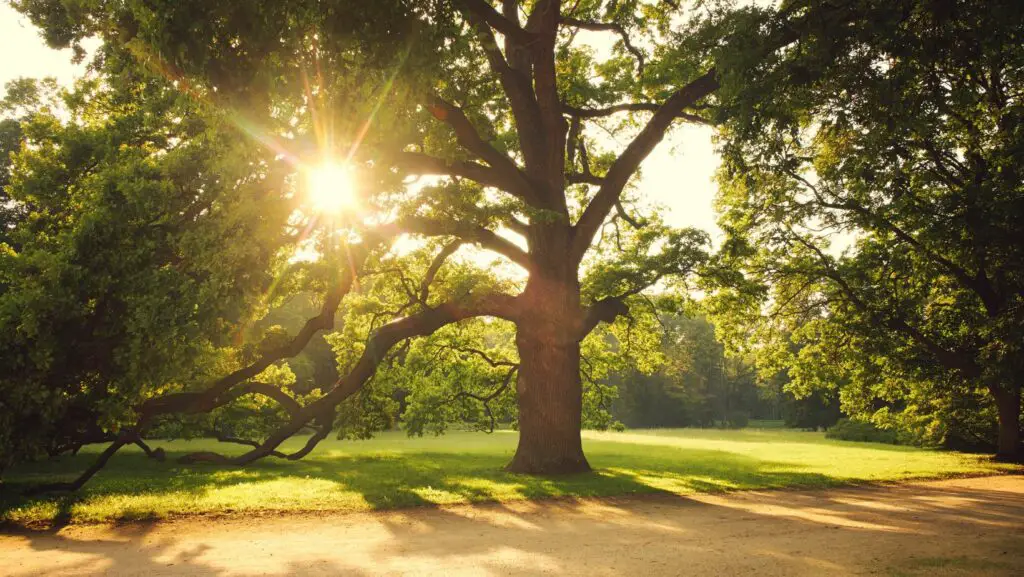
Trees usually take somewhere between 15 to 80 years to fully grow and then continue to live for a very long time, centuries even! You may have looked at a tree and thought to yourself “How old is that tree?” Well, there are ways to find out the answer to that question! You might be familiar with the age-old method of counting a tree’s rings to tell how old it is. Perhaps you might have even thought that that was the only method of determining a tree’s age. Well, if you find yourself wondering how old a tree is and if chopping it down to find out is not an option then you’re in luck! This article is going to tell you about 5 methods you can use to tell how old a tree is.
In short, you can determine how old a tee is in five ways: Measuring its trunk, counting whorls on the tree, estimate the age based on the tree’s growth factor, by counting rings on a tree trunk, or if you do not want to cut the tree down then taking a core sample and inspecting it.
Five methods to calculate a tree’s age
Trees can live from anywhere between a few years to a few centuries. Trees contain information on how old they are within themselves. There are several methods that can be used to determine the age of a tree. Let’s take a look at five of them.
Method #1: Measuring the Trunk
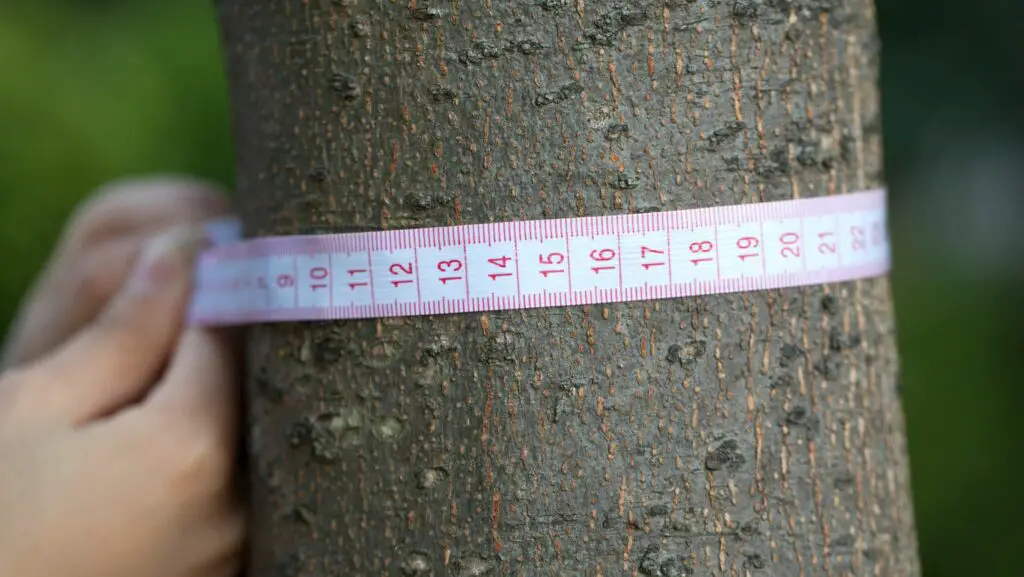
Measuring the trunk of a tree and plugging its dimensions into a simple formula is an easy and accurate method. You can calculate the tree’s age without doing any damage to it. Below are the steps to follow and an example of measuring an oak tree to illustrate the steps:
- Step 1: Measure the circumference of the trunk at breast height. The average breast height of a tree is 4.5 feet or 1.4 meters above the ground.
E.g. the measured circumference of an oak tree is 154 inches.
- Step 2: Use the trunk’s circumference to find out its diameter and radius. To calculate the diameter, divide the circumference by pi (3.14). To calculate the radius, divide the diameter by 2.
E.g. 154 inches ÷ 3.14 = 49 inches (diameter); 49 ÷ 2 = 24.5 inches (radius)
- Step 3: Subtract 0.25, 0.5, or 1 inch from the radius to factor out the bark. If the tree has a very thin bark, subtract 0.25 inches. If it has a thin to moderate bark, subtract 0.5 inches. If it has a thick bark, subtract 1 inch.
E.g. the oak tree has a moderate bark so we subtract 0.5 inches. 24.5 – 0.5 = 24 inches.
- Step 4: Determine the average width of a ring in the wood for the species of the tree you are measuring. If there is another tree of the same species with an exposed stump and visible rings, calculate its radius and count the rings. Then, divide the radius by the number of rings. This will give you the average ring width. You may also refer to any credible online or offline guide that specifies this information.
E.g. the reference oak tree has a radius of 10 inches and 50 rings on its trunk. 10 inches ÷ 50 rings = 0.2 inches per ring.
- Step 5: Divide the radius of the tree you are measuring with the average ring width that you calculated.
E.g. 24 inches ÷0.2 inches per ring = 120 years. Our oak tree is 120 years old!
Method #2: Estimating Based on Growth Factor
If you were unable to do steps 4 and 5 in don’t worry. We have an alternative method for you! You will need to refer to an online source for this. Though this method may not be as accurate and specific to your particular tree, it should give you a good estimate of your tree’s age.
- Step 1: Measure the circumference of the trunk at breast height. The average breast height of a tree is 4.5 feet or 1.4 meters above the ground.
E.g. the measured circumference of an oak tree is 154 inches.
- Step 2: Use the trunk’s circumference to find out its diameter. To calculate the diameter, divide the circumference by pi (3.14).
E.g. 154 inches ÷ 3.14 = 49 inches (diameter).
- Step 3: Search for your tree’s growth factor on an online or offline source. There are growth factor charts available online that indicate the growth factors of different trees. Find your species of tree and note its growth factor.
E.g. the growth factor for a pin oak tree is 3.
- Step 4:Multiply the diameter of the tree by its growth factor.
E.g. 49 inches x 3 = 147 years old..
Method #3: Counting Whorls
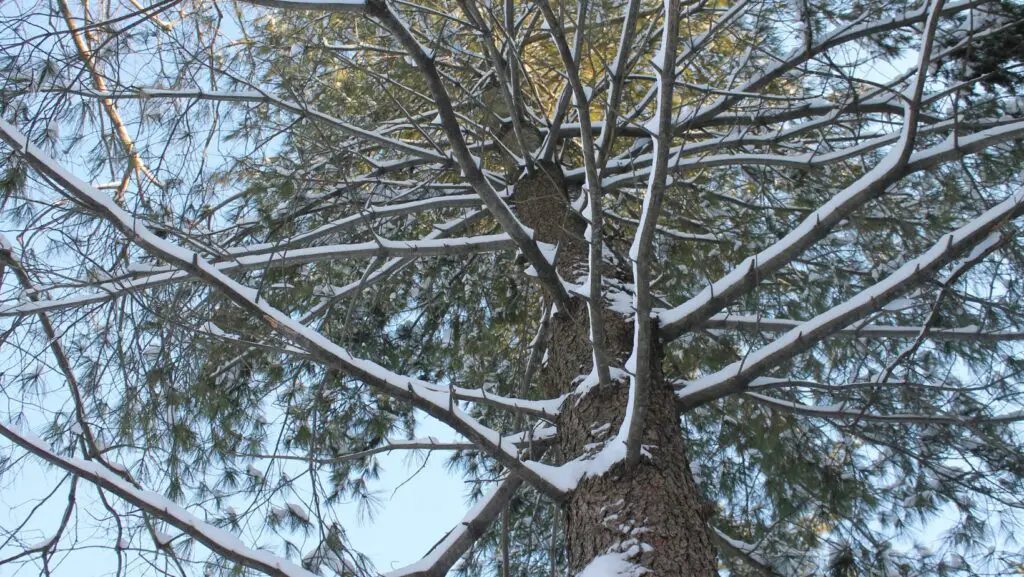
Whorls are those circular rows of branches on coniferous and evergreen trees. Hence, this method is only feasible for trees that have whorls. If the tree you wish to measure has whorls then do try out the steps below but if it doesn’t, don’t worry, we have other methods for you to try!
- Step 1: Count each whorl or the circular rows of branches on the tree. Remember that all the branches on a single whorl grow at the same height. If you see any irregular branches in between two whorls, don’t count them. Make sure to check the bottom of the tree (below the first whorl) for any evidence of past branches. If you see a row of stubs, count that as a whorl
- Step 2:Add 2 to 4 years to the total number of whorls counted. This is to account for the period between germination to the sprouting of the first whorl.
E.g. If you counted 15 whorls altogether, the estimated age of your tree should be somewhere between 17 to 19 years old
Method #4: Counting Rings on a Core Sample
For this method, you will need a specialized tool called an increment borer. An increment borer is inserted into the trunk of a tree and is then used to extract a portion of its wood which we will refer to as a core sample. This is the best method of counting tree rings from the very same tree you are measuring with minimal damage inflicted upon it.
- Step 1: Get an increment borer. If you don’t already own one and cannot find any in local stores, you can purchase one online. Be sure that the length of the increment borer you are using is at least 75% of your tree’s diameter so that the sample contains a good amount of rings.
- Step 2:Determine the radius of the trunk. Measure the circumference of the trunk. Divide the circumference by pi (3.14) to calculate the diameter. Divide the diameter by 2 to calculate the radius. Determining the radius (50% of the diameter) will help indicate how far the increment borer has to be inserted to cover 50% of the diameter.
- Step 3:Insert the increment borer into the trunk at breast height. The average breast height of a tree is 4.5 feet or 1.4 meters above the ground.
- Step 4: Turn the handle of the increment borer clockwise. Be sure to apply sufficient pressure while doing this so that the extraction will be smooth.
- Step 5: Carefully remove the increment borer and core sample. Check to see that you have extracted at least 50% of the trunk’s diameter.
- Step 6: Locate the pith; the point at the center of the trunk. This is the center point of the trunk’s cross-section. The rings begin forming around the pith.
- Step 7: Count the number of rings on the core sample. Each curved line on the core sample is one ring and each ring represents one year. Count the total number of rings from the pith to the bark.
- Step 8: Add 5 to 10 years to the total number of rings counted. This is because the number you have counted so far is based on the Diameter at Breast Height (DBH).
E.g. If you counted 15 rings altogether, the estimated age of your tree should be somewhere between 20 to 25 years old.
Method #5: Counting Rings on the Trunk
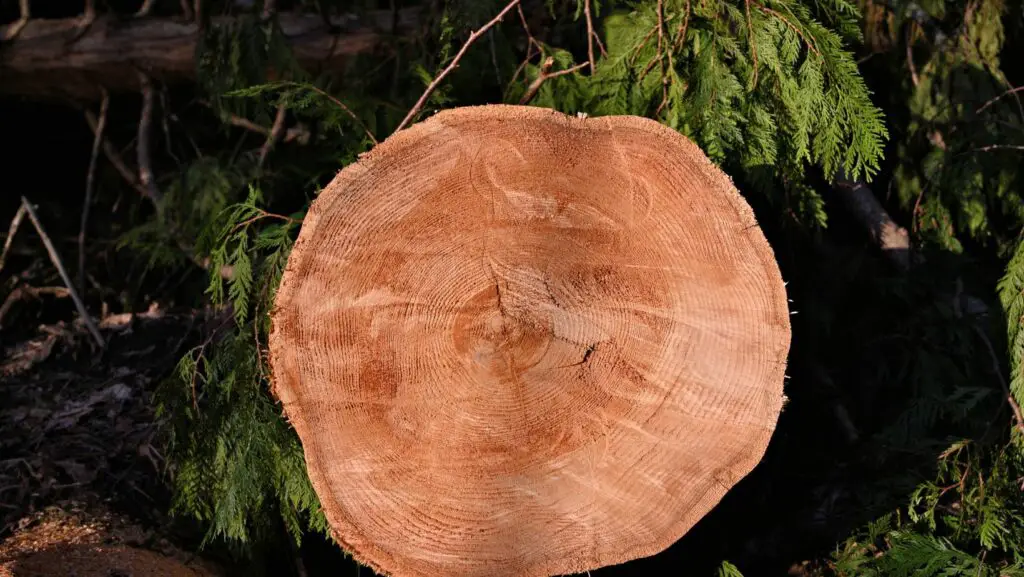
At last, we have come back to the classic, most infamous method used to calculate the age of a tree; counting the tree rings on the trunk of the tree itself. While this may be the method that yields the most accurate results, it also does the most damage to the tree. Of course, the tree needs to be chopped in order for its rings to be counted.
- Step 1: Go to a tree with an exposed stump. You may have chopped this tree yourself or you may find one that has already been chopped. Note that the rings on the stump are visible. If they are not clearly visible, you may want to sand the stump using 60-grit sandpaper and then finishing with a fine 200-grit.
- Step 2:Count the number of rings on the stump. Locate the pith; the center point of the trunk’s cross-section. Count the rings from the pith to the bark. One ring represents one year. Sum the number of rings to get the total age of the tree.
E.g. If you counted 15 rings altogether, the age of your tree should be 15 years old.
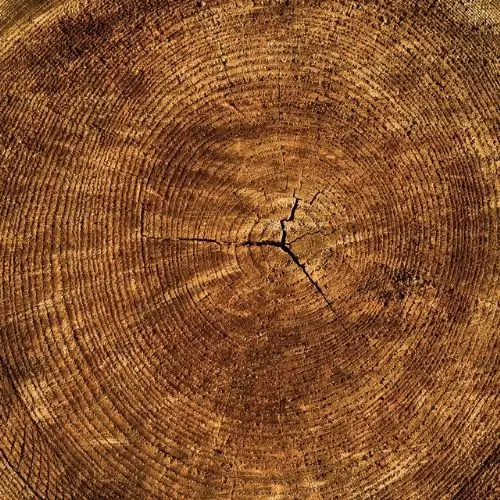
There are many methods you can use to calculate the age of a tree but these are the easiest five. We hope that this guide was informative to you and perhaps even helped you calculate the age of a tree you have been curious about! Now, let’s talk a little more on the topic of determining a tree’s age.
How do you find out the age of a tree without cutting it down?
There are four methods of finding out the age of a tree without cutting it down. The first method is to measure the tree trunk to determine its circumference, diameter, and radius. Using this information along with the average ring width of the species, you can calculate the age of the tree.
The second method is to measure the tree trunk for the aforementioned dimensions. Use this information along with the growth factor of the species which can be searched online to determine the tree’s age.
The third method is to count the whorls of the tree; one whorl represents one year of age. This is only feasible for coniferous and evergreen trees with whorls.
The fourth method is to extract a core sample from the trunk of a tree which bears lines from tree rings; one ring represents one year of age.
You can find out the age of a tree without cutting it down using four methods: 1) measuring the tree trunk and dividing its radius by the average ring width of the species, 2) measuring the tree trunk and multiplying its diameter by the growth factor of the species, 3) counting the whorls on the tree, and 4) counting the lines on a core sample from the trunk of the tree.
How old is a fully grown tree?
Different species of trees have different growth rates and take different amounts of time to reach maturity. A seed can become a sapling in 6 months to a few years.
The sapling can gradually develop to become a fully grown tree it can take 15 to 80 years for trees depending on their lifespan.
The fruit-bearing capacity of a tree is also dependent upon its growth rate. Fig, mulberry and peach trees can bear fruit within the first 5 years while oak trees usually produce their first acorn after 20 years. The best way to find out the age of a fully grown tree is by trying out any of the methods discussed earlier in this article!
The age of a fully grown tree depends on its species’ growth factor. Fast-growing trees may be fully grown after 15 years while slow-growing trees may be fully grown at 80 or more years.
Recommended reading:
Do tree rings really tell age?
Tree rings really do tell age! Every year, a tree adds a new layer to its width; this new layer forms a ring. The age of a tree can be determined by counting the rings from the pith of the trunk to the bark.
Tree rings are the most accurate indicator of a tree’s age. They indicate what the natural conditions were in the environment the tree was growing in throughout the years.
Due to being exposed to different natural conditions, a single tree ring can contain both light and dark lines. This is especially true for trees growing in places with four seasons.
Tree rings do tell a tree’s age and also the conditions of the environment that the tree grew in. The variances in the natural environment can cause the tree rings to bear both light and dark lines and vary in width.
What do dark tree rings mean?
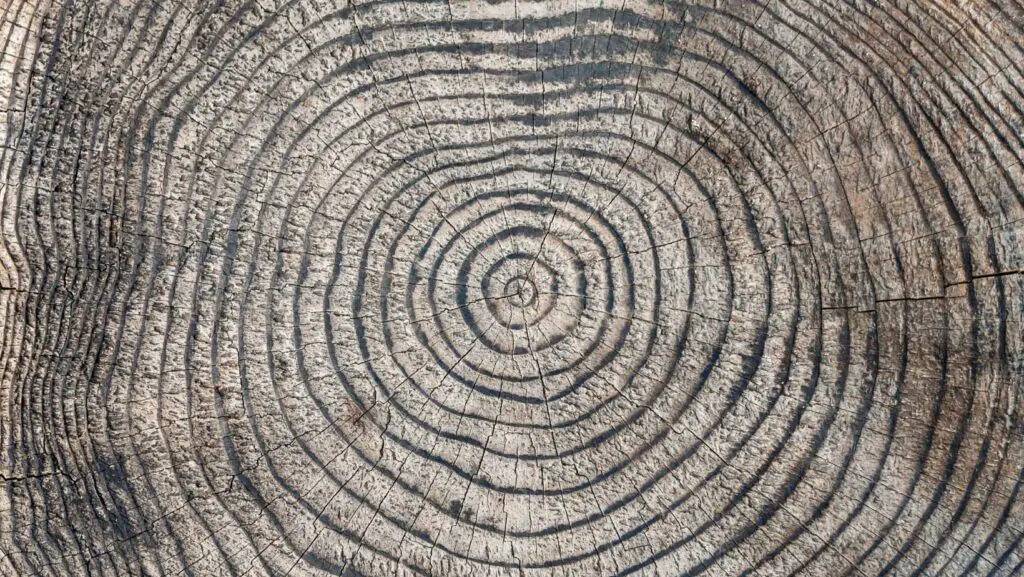
Trees can grow girth in the spring and early summer seasons and also in the late summer and autumn seasons. Wood that grows in the late summer and autumn seasons produces dark tree rings.
When the tree grows in the earlier seasons, the cells produced are larger with thin walls. When the growth of the tree slows down during the later seasons, the cells produced are smaller with thick walls. This is what gives the line of the tree ring its darkness. A single tree ring generally contains both light and dark layers as a result of the seasons and their effect on tree cell growth.
Dark tree rings on trees represent growth during the late summer and autumn seasons. During this time, the growth process is slowed down and the tree cells become small with thick walls.
How tall is a 10 year old oak tree?
There are many different species of oak trees and these species may be of very different heights when they reach 10 years of age. However, it is safe to say that for most species of oak, a 10-year-old tree will be somewhere between 10 to 20 feet.
The Nuttall Oak is considered to be the fastest-growing species of oak tree and can grow to 20 feet in 10 years! They also begin producing acorns within 10 years.
The Bur Oak is one of the slowest-growing oak trees and may not even reach a height of 10 feet in 10 years. The other varieties of oak trees fall between this range.
The height of a 10-year-old oak tree depends on the species. Most oak trees will reach 10 to 20 feet in 10 years. Some will be taller than 20 feet and some shorter than 10 feet at 10 years of age.
What is the growth factor of an oak tree?
The different species of oak trees have different growth factors. The pin oak has a growth factor of 3 while the red oak has a growth factor of 4 and the white oak has a growth factor of 5. Other species of oak trees have growth factors ranging between 3 to 6. These varying growth factors highlight the differences between the species of oak. It also indicates their differing capacities to grow a certain height within a single year. Similarly, other trees such as the ash, maple, and pine trees also have growth factors that are very different across distinct species.
The growth factor of an oak tree depends on the species of the oak tree. Oak trees have growth factors ranging from 3 to 6.
Frequently Asked Questions:
This sure is an interesting topic, isn’t it? Well, we know that when you find something interesting, you will have a lot of questions about it! So, here are a few frequently asked questions about the topic:
What can we learn from tree rings?
Dendrochronology is the study of tree rings. Tree rings indicate the age of a tree. Tree rings can also suggest the natural conditions of climate and environment throughout the periods of the tree’s lifespan. Examples of such conditions are rain, temperature, floods, earthquakes, insect plagues, etc.
What is the oldest tree in the world?
For the longest time, the oldest tree in the world on record was a Great Basin Bristlecone pine called Methuselah. It is located in the White Mountains of California. Methuselah is believed to be 4,852 years old. However, recently there has been another Great Basin Bristlecone pine discovered in the same mountains. This one has an estimated age of 5,062 years!
Can trees die of old age?
It is rare for a tree to die due to old age and the symptoms of aging. However, trees do die from exposure to natural conditions. These conditions deteriorate their health throughout the years. Examples of fatal conditions are fire, flood, tree disease, etc.
What causes the sudden death of trees?
Most reasons that cause the sudden death of trees are associated with the conditions of the ground. Some examples are drought, flooding, poor soil, insufficient soil depth and, soil compaction. Soil is a very important factor to consider when planting a tree and is often the reason why trees experience sudden deaths early in their lives.
What tree has the longest lifespan?
The tree with the longest lifespan is the Great Basin Bristlecone pine which can live to become 5,000 years old. Another long-lived species is the Ginkgo Biloba tree which can live from 1,500 to 3,000 years. The Yew tree is yet another which can live from 400 to 600 years with some surviving 2,000 years. Fun fact, the Ginkgo Biloba is one of the oldest living tree species and is believed to originate 200 million years ago!
Conclusion
Trees are full of complexities from their ages to their weights. Fortunately, we as humans have discovered methods to solve these mysteries. We can now better understand the living things we share our natural environment with. Test what you have learned from this article. Find a tree near you and see if you can figure out how old it is! It is an opportunity to impress your family and friends with your advanced knowledge about trees and it is fun!
More interesting reading:
- 5 TREES THAT NATURALLY HAVE GREEN BARK
- ARE ELM TREES EVERGREEN
- TREES WITH SMOOTH BARK
- WHY DO TREES HAVE BARK?

Hi!
I am the guy behind Theyardable.com. I grew up on a homestead and I am here to share the knowledge I have and things I learn while living in the countryside.
